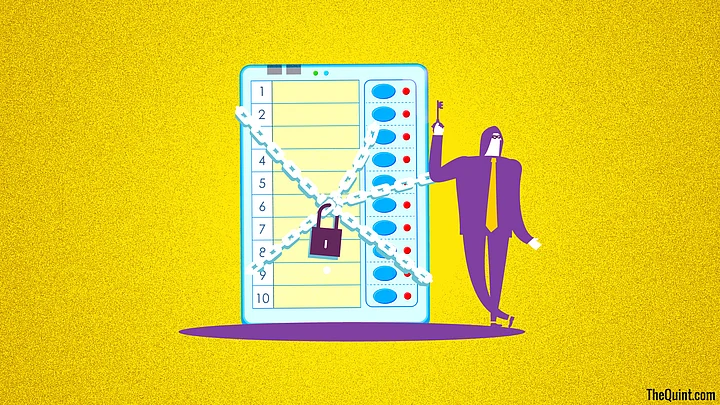There was much curiosity around a press conference held in London on 21 January about electronic voting machines (EVMs) that were used in the 2014 general elections in India being hacked. Syed Shuja, who claims to be a US-based cyber-expert and had worked on designing EVMs says he has proof that the machines were rigged.
See the live press conference below:
After spending 90 minutes listening to Syed Shuja cast allegations about the elections being rigged, some very basic questions went unanswered. The most basic of which was: How were the electronic voting machines rigged?
This is what Syed Shuja claims happened, although details are very sketchy.
He claims EVMs cannot be hacked using Wi-Fi or Bluetooth technology. However, he says he and his team had worked on an EVM prototype’s printed-circuit board (PCB). The chipset used in that EVM was an old one, which has an ASK (amplitude shifting keying) module and FSK (frequency shifting keying) module in it.
This is both a transmitter and a receiver, which works on very-low radio frequency bandwidth between 7Hz and 390Hz that Shuja claims is military-grade radio frequency spectrum.
He claims that in order to manipulate an EVM, one needs to bypass the chipset’s kernel, for which he and his team wrote a program. To transmit and receive data, a thin graphite-based transmitter was added to the PCB on the prototype he was working on.
Shuja claims that soon after that millions of PCBs were manufactured for EVMs with the same design and used in the 2014 elections.
He claims he discovered that the EVMs were being rigged on 30 April 2014, because the modulator that his team was using began to receive frequencies “left, right and centre” in Hyderabad. He said he initially thought it was a bug, but later figured it was specific data coming from EVMs.
To rig the machines one needs a GNU modulator (a type of radio frequency transmitting device) that transmits data at a very low frequency in the 7Hz to 390Hz spectrum.
He claims a certain company (didn’t name it) has about 42 of these devices that can transmit data, and these have been used to manipulate results. Basically, by running interference, these devices can change a vote from one button (party A) to another one (party B).
He also goes on to claim that the VVPAT system (Voter Verifiable Paper Audit Trail) was also rigged. He claims that a voter’s vote verification is printed on thermal paper that lasts only for a short while under light, but changes to another party’s symbol once it’s put in the ballot box.
These claims have not been validated and seem a bit far-fetched. He has not been able to demonstrate how this was done, because he was apparently attacked and prevented from coming to the press conference (held via Skype in London).
We are still waiting for answers or a demonstration to prove these claims.
A year ago the Aam Aadmi Party made similar claims, but did a demonstration of it in the Delhi Assembly. This demonstration was, however, refuted by the Election Commission.
(At The Quint, we question everything. Play an active role in shaping our journalism by becoming a member today.)
